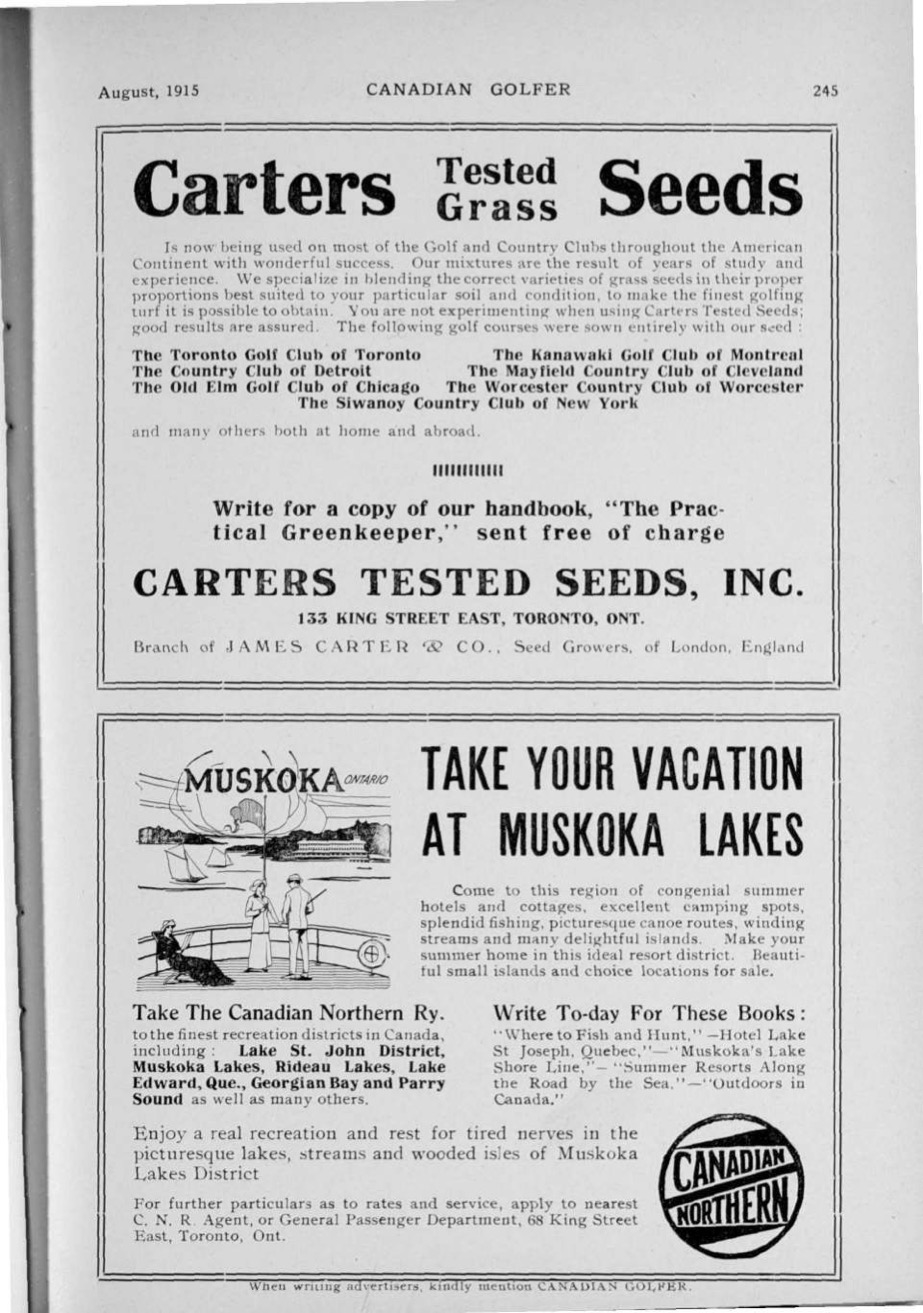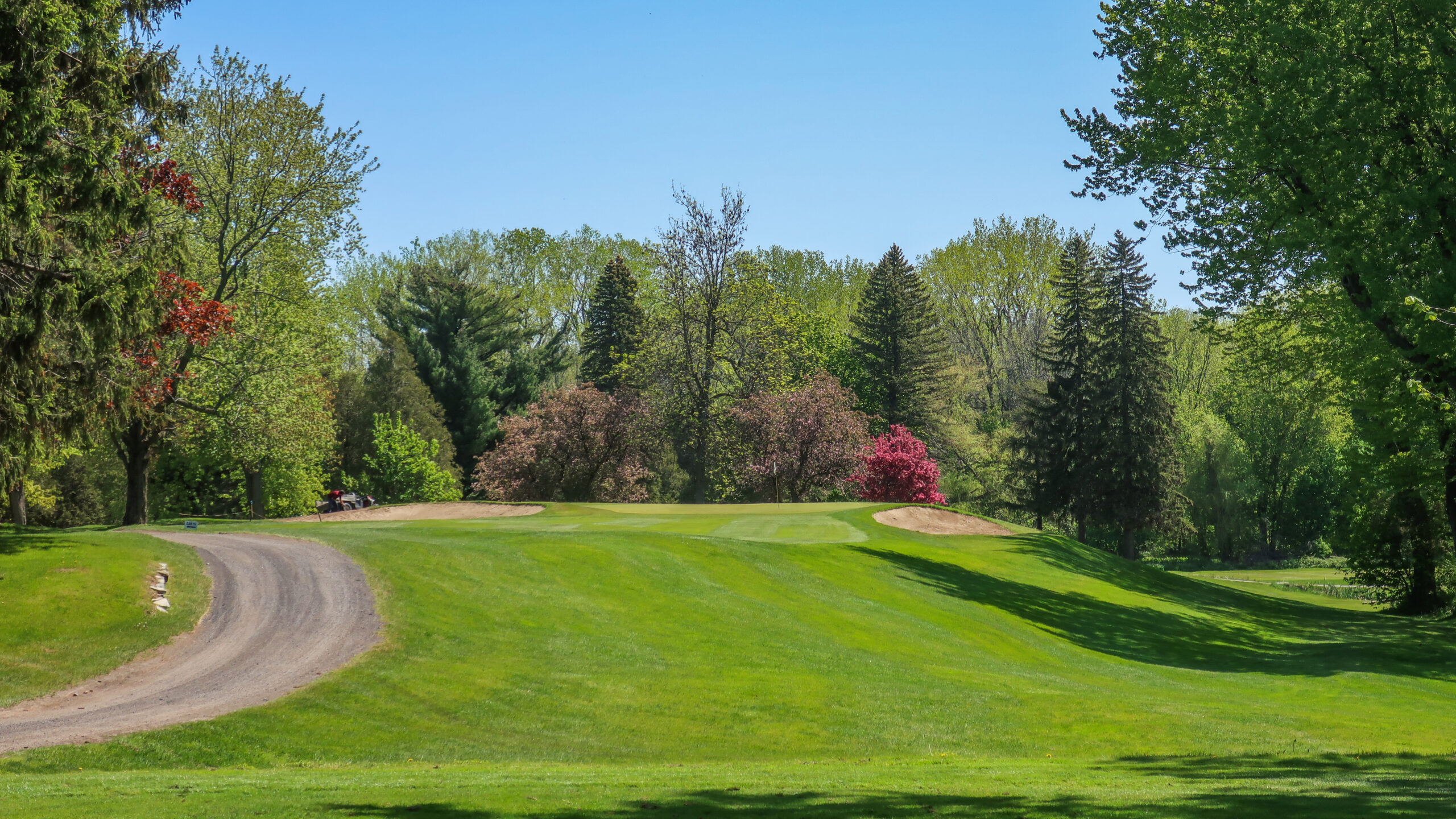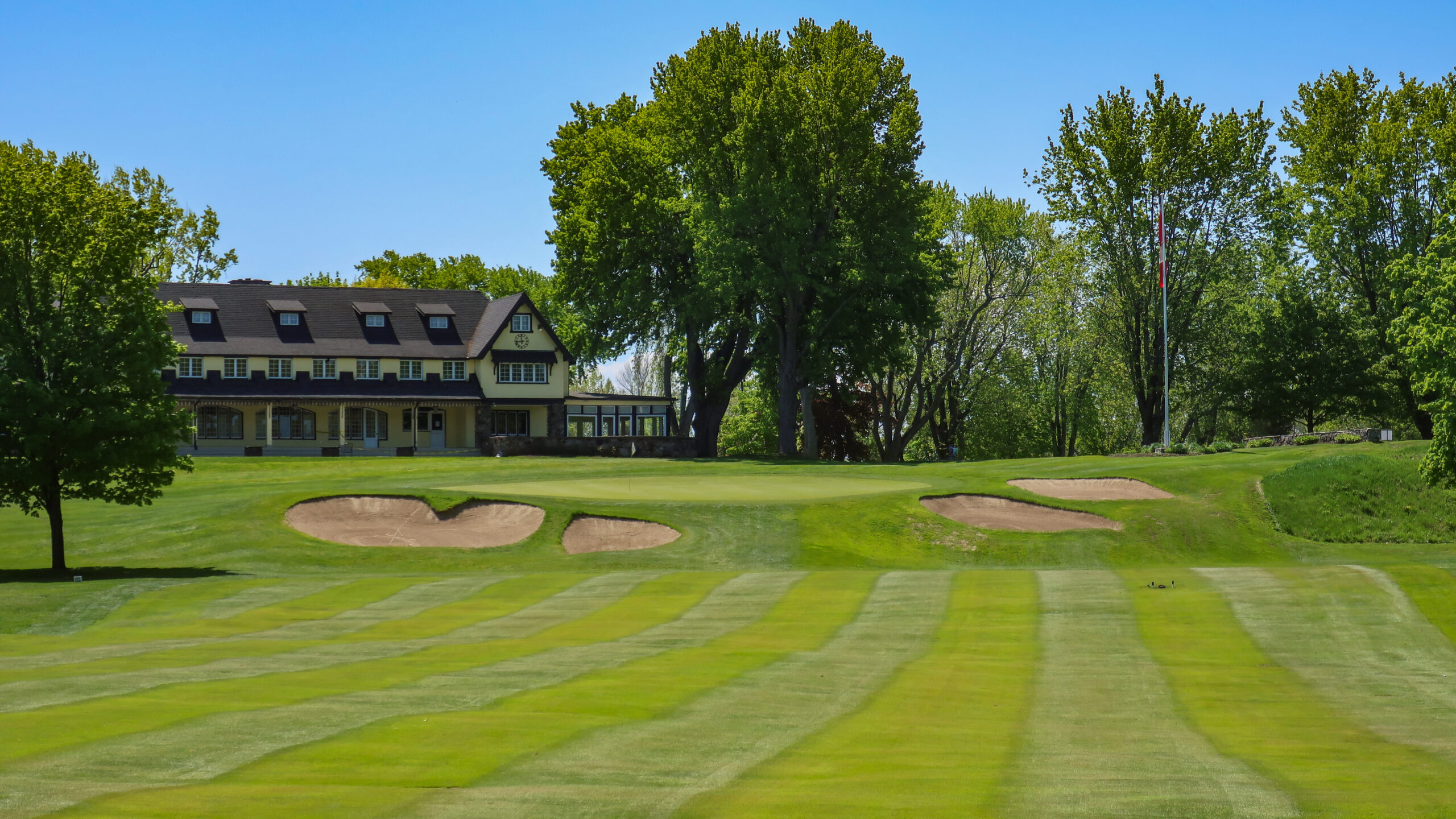This week, the RBC Canadian Open returns to Hamilton Golf & Country Club, one of just a handful of golf courses in North America left accredited to Harry Colt. His partner, Charles Hugh Alison, nicknamed “Captain Alison,” also worked on the golf course after Colt. Though these days the golf course is arguably more Martin Ebert and Tom Mackenzie than it is Colt and Alison, there is no denying their stamp on Hamilton’s property, and likewise for golf in North America.
Colt is, among many, considered to be firmly in the discussion for the best architect ever. At the very least, his body of work—including Muirfield, Swinley Forest, St. George’s Hill, Pine Valley, Toronto Golf Club, and Hamilton—is universally praised for interesting, strategic golf courses. Colt’s journey to North America is well documented in Anthony Gholz Jr.’s book Colt and Alison in North America, arriving in New York City in 1911. He visited North America less than five times, but what he left is crucial for the backbone of not only golf in the United States, but also Canada.
On that maiden voyage in 1911, Colt visited the city of Toronto, Canada’s second largest at the time, for Toronto Golf Club. The club’s original location in 1911 became unsuitable for golf and with eyes on a property on the Etobicoke Creek west of the city, Colt came in to lay out the golf course.

Colt famously began his golf courses by searching for the one-shot par 3 holes, and at Toronto, he found a doozy of a set: the par 3, 4th, an impressive bunker-less quasi redan hole perched above the depression short, striking fear into the golfer early; the par 3, 7th, featuring a green sitting out onto a finger towering above the depression low short, right, and long; the par 3, 14th, playing over a top shot bunker, a secondary bunker, and flanked by one up the right; and the par 3, 17th, nicknamed “graveyard” for the terrifying bunkers lying short of the green on the 17th. In doing so, a young Stanley Thompson—18 years of age and caddying at Toronto Golf Club at the time—witnessed Colt’s magic in person. Though it has never been confirmed, it is realistically not a coincidence Thompson also began routing his golf courses with par 3’s like Colt did after seeing the product and continuing to caddie at the club. As we know now, Thompson became a figurehead in golf in Canada, contributing five of Canada’s eight best golf courses and copious other celebrated layouts.
Alongside Hamilton Golf & Country Club, Toronto Golf Club is one of just two Colt layouts in Canada that golfers can enjoy to this day. That is far from his only contributions to this country’s golfing landscape, though.

Following his initial visit to North America in 1911, Colt returned in 1913 where he was much more prolific. In 1911, Colt only visited Country Club of Detroit and Toronto Golf Club, but 1913’s trip saw Colt visit Toronto Golf Club to check how the golf course came through construction, his first visit to Hamilton, and stops in Ottawa and Montreal.
At the time, Montreal was Canada’s largest city and a hub for innovation and industry. The city boasted the oldest established golf club in North America at Royal Montreal, and their second location in Dorval sported an impressive Willie Dunne layout (of Shinnecock Hills fame). Royal Montreal brought in Colt to assess their golf course, with the prospect of potentially moving locations in search of both a better piece of property and avoiding the rapid expansion happening on the Ile de Montreal. Dorval was a hotbed for golf until the 1950s or so, with A.W. Tillinghast, Willie Park Jr. (numerous courses), Stanley Thompson, Willie Dunne, and more all designing golf courses roughly in the same area of Montreal, but in its early years, Royal Montreal was incredibly savvy and always searching for the best possible product—it was also the top dog at the time, largely considered one of Canada’s finest layouts.

In Colt’s visit, he not only assessed Willie Dunne’s original golf course at Royal Montreal’s Dorval location, but sought out other properties, too: one of which happened to be the location where Willie Park Jr.’s Mount Bruno Country Club resides now, though that was built five years following Colt’s visit to the property. Harry Colt’s professional recommendation was the club should stay at their current golf course because of its quality layout, and Colt ended up renovating the layout to further improve it.
Here is where things get messy: on that visit to Montreal in 1913, Kanawaki Golf Club south of downtown Montreal was currently under construction from Albert Murray, a young architect who would go on to be Quebec’s greatest golf architect (a fine designer in that, as well). A reprint in the Lethbridge Herald from a Montreal newspaper lists Kanawaki as a H.S. Colt design, with no mention of Murray. Also worth noting, Carter Tested Grass Seeds, a leading agronomy company in Canadian golf at the time, advertised Kanawaki alongside Toronto (Colt), Old Elm (Colt), Country Club of Detroit (Colt), and Mayfield in The Canadian Golfer. The first three are undoubtably Colt designs, while Mayfield has similar information as Kanawaki to lead to speculation if it is a Colt or not. Between those five Colt or rumoured-to-be Colt designs, they represent the first five names on the advertisement, with Worchester and Siwanoy not being Colt designs.
The Links at Kanawaki are among the best on the continent. They were laid out in 1913 by H.S. Colt, a famous English architect. One of the distinctive features of Kanawaki is the unusual number of holes that require two full shots or better. There are nine holes varying in length from 395 to 535 yards at which the average first class player must use at least a full iron shot for his second. There are four of the drive-and-pitch variety, and each one has its own special characteristics
Lethbridge Herald — Tuesday, July 3, 1923
- The par 3, 17th would fit in with the one-shot holes at Toronto or Hamilton with a restoration.
- The strong par 4, 18th at Kanawaki is a fitting finish to a noteworthy golf course.
Perhaps somewhat also perplexing, Kanawaki continues to not acknowledge Donald Ross and his contributions to the layout in the early 1920s, confirmed through The Canadian Golfer. It still seems far-fetched; by the time Colt visited Montreal, construction had already started and some of the holes were built and open at Kanawaki, but perhaps Colt came in and advised Murray, potentially helping him cross the finish line? The routing is in triangles much like Hamilton too, and there are distinctive elements that feel like a Harry Colt design. The most likely scenario? H.S. Colt and Albert Murray both deserve co-design credit, but without proof, Murray is deserving of the solo billing on a very solid golf course.
With Colt’s murky Montreal contributions up for much debate and discussion, his presence at Royal Ottawa is without question, having visited the club in May 1913. He advised the club on numerous changes to their layout, but no confirmation on whether or not the club actually took the advice and changed their Tom Bendelow & Willie Park Jr. layout is available due to a clubhouse fire in the 1930s. Much like Kanawaki, Colt left very detailed drawings and routing plans at both Toronto Golf Club and Hamilton Golf & Country Club (along with his American golf courses, too), and if there was any proof of these changes, they likely went up in flames. For both instances, Toronto and Hamilton have numerous drawings and examples of Colt’s contributions, and Royal Ottawa and Kanawaki alike have nothing but newspaper articles.

Aside from his very tangible contributions to golf in this country, Colt’s influence was and still is felt across the country. That includes Thompson and his catalogue, with his famous set of one-shot holes likely stemming from Toronto Golf Club and Colt’s own routing style. Speaking of Toronto Golf Club, much like what National Golf Links of America did for the United States, TGC was the watershed moment for golf architecture in Canada, largely setting the scene for what golf could, and did, become. That is not to say there was no quality golf before 1911—Royal Ottawa, Beaconsfield, Rivermead, Mississaugua, Rosedale, and Victoria, all Top 100 Golf Courses on this website, all existed in some form with quality golf, though many of their layouts substantially changed during the Golden Age in the 1920s—but Toronto Golf Club set the standard from a strategic, aesthetic, and character standpoint. So much, in fact, that in The Canadian Golfer, Canada’s leading golf publication at the time, once quipped that Saskatoon Golf & Country Club did not consult H.S. Colt on their new layout, as if it was some slur or crime to not seek out his expertise.
Mr. H.S. Colt was not called in to advise on the layout [in Saskatoon].
The Canadian Golfer
Like his partner, Charles Hugh Alison, nicknamed “Captain Alison,” came to North America and immediately began to have his aura felt across the eastern side of the continent, designing numerous highly viewed golf courses like Milwaukee and Davenport, while also renovating others (like Pine Valley).

In Canada, that included renovations to both Hamilton and Toronto Golf Club. At Toronto, Alison pushed the 13th green back and re-orientated the 14th hole to its current location (it used to play roughly from the middle of the layup zone on 13 to 15 tee). Interestingly, Alison also renovated Hamilton’s 13th hole in a similar manner to the 14th at Toronto Golf Club. Colt’s original par 3 played towards the front teeing ground on the 14th hole, but it was deemed too difficult and Alison moved the green complex to its current location. Further, Alison had finished Colt’s bunker work at Hamilton, with Colt never seeing the layout completed and superintendant John Sutherland building the bunkers “without character.”
More importantly though, Alison also contributed his own designs to the Canadian golf landscape. All but Grand-Mere, currently ranked 24th on Beyond The Contour‘s Top 100 Golf Courses in Canada, no longer remain unfortunately, but he was relatively prolific in Canadian golf during the 1920s. This included York Downs, a then-famous Toronto private club in North York, bunkering Willie Park Jr.’s Weston Golf & Country Club, and thirty-six hole addition to Montreal’s golf scene at Forest Hills, though that has never been confirmed if it was built or not.

Further, speculation on Alison’s involvement at a course in La Malbaie, Quebec—if anything, it would be Murray Bay because Herbert Strong’s Manoir Richelieu came after Alison’s visit and that course is very well documented—adds to Alison’s potential influence in Canadian golf. For Harry Colt, Bowness in Calgary is his final contribution to Canada, though it was built to a plasticine model and opened in 1918, long after Colt left North America and never having seen the site. You can still play Murray Bay, but Bowness is buried under the Olympic Park in Calgary and the ski hill there.
While Colt and Alison might not have built as many golf courses as Stanley Thompson, Donald Ross, or Willie Park Jr. in Canada, their influence into how we percieve golf is crucial. After all, the three golf courses under their name that remain playable today rank an impressive 6th (Toronto), 9th (Hamilton), and 24th (Grand-Mere), and one wonders how high a York Downs or Royal Montreal might rank had they survived. Even further, if Royal Ottawa or Kanawaki could restore to a (hypothetical) Colt plan, would they dramatically vault up the rankings? All speculation of course, but Colt’s prowess is undeniable.
Nonetheless, Toronto Golf Club set the standard for golf in Canada (and in some respects, is still doing so with their restorative work and tree removal), Hamilton Golf & Country Club remains one of the nation’s best championship tests, Colt’s influence on Thompson and how he routes his golf courses and what he left behind, and more.
When you’re watching Hamilton Golf & Country Club this week, take in the beauty, strategy, and significance: only six Colt golf courses remain in North America, and this is one of them—and it’s worth noting, this is just the tip of the iceberg for Colt & Alison, who heavily contributed to the golfing landscape of Scotland, England, The Netherlands, Japan, and more.














Based on your pictures of Toronto Golf Club the maintenance practice of growing the rough to extreme heights ( as over the top “eyebrows” ) at the front edges of the bunkers is “golf malpractice”. Instant unplayable lie for a shot that might have missed in some cases by a matter of feet or a few yards. Especially around the greens. That is not what Colt ever intended. I’m a big fan of his architecture. ( as a reference I have played over 70 courses that currently sit in the various World Top 100 rankings ) I have studied golf course architecture most of my golfing life. The truly great designs reward good shots and don’t over penalize missed shots to an unfair extreme.